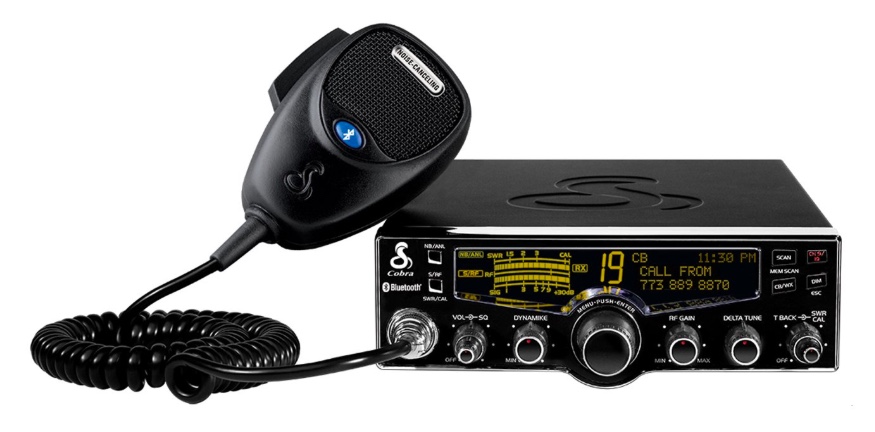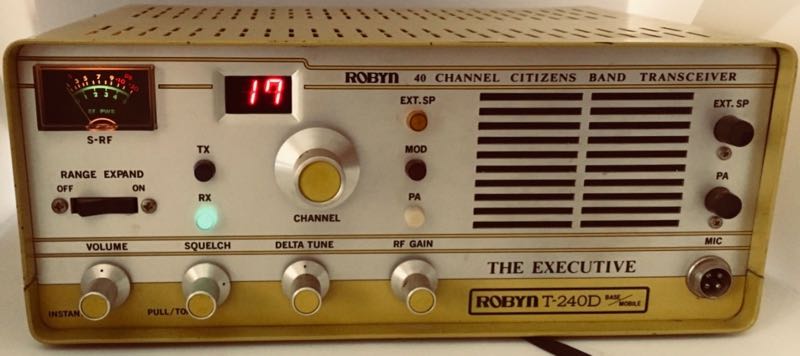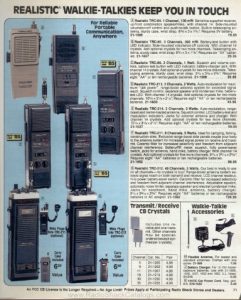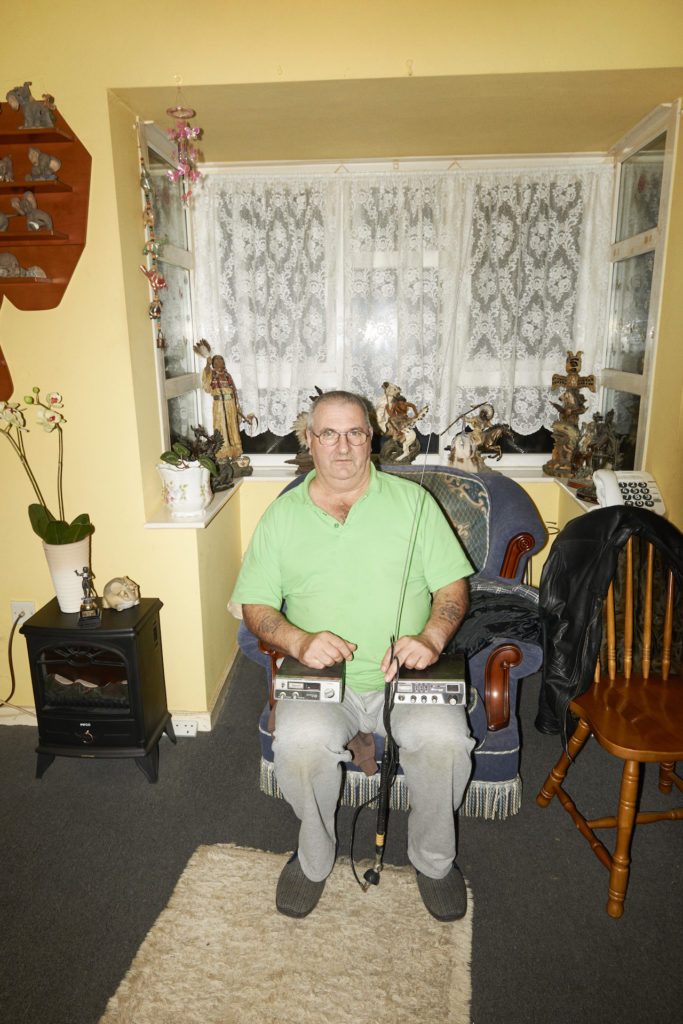Many thanks to SWLing Post contributor, Mario Filippi (N2HUN) for the following guest post:
An Unusual Night for CB
by Mario Filippi (N2HUN)
December 2nd was an unusual night for CB (Citizen’s Band) radio, as the band was open late (0030 GMT) when I turned on the President Washington CB radio just to see who was on. First stop was Channel 19 (27.185 MHz), the trucker’s channel, where the QRM was high, due to the skip from the many truckers on the channel. Earlier in the day this channel was very quiet as was the rest of the band. The fact that Channel 19 was pinning the S meter after dark was a big hint that the band might be open. And it certainly was!
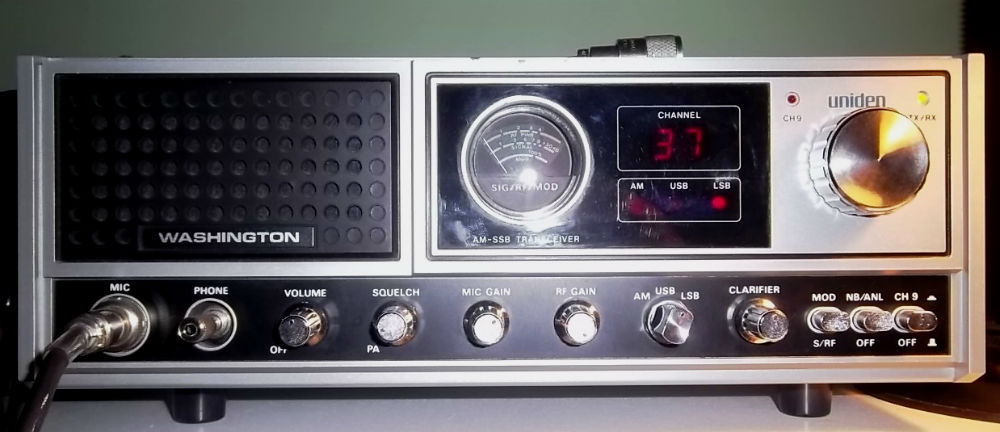
Uniden President Washington AM/SSB Base Station
Being a CB’er from back in the 70’s (call sign KBN-8387), this band was my first serious introduction to two-way radio communication, and after 40+ years it’s still an enjoyable experience to listen in to the local, and sometimes DX chatter. For the most part the CB band mimics 10 meters, basically open during the day (except when sunspot numbers are low) and closed at night. That’s the usual drill, but Mother Nature doesn’t always go by the playbook and sometimes the band is opened at the darnedest times, sometimes even after midnight!
So this evening around 8:30 EST the President Washington CB base station was fired up and CB operators were heard in Maine, Illinois, and as far as Wisconsin, definitely what would be considered out of the ordinary range of CB, which is generally several miles. Now FCC rules still state that it’s illegal to communicate over 155 miles but it’s a non-issue when the band’s open. For the most part, AM is used on most of the channels but you’ll find LSB activity on Channel 36 (27.365 MHz). And when the band gets busy and crowded, you’ll hear LSB QSOs from Channels 36 – 39 (27.365 – 27.395 MHz) as sidebanders spread out among the channels so that they can work each other through the QRM.
To get a better idea of what the CB band “looks” like during a band opening, a spectral scan of the band (26.965 – 27.405 MHz) would be useful. This can be achieved using an SDR dongle, such as the RTL-SDR.com version which is a diminutive broadband receiver with an analog to digital converter and covers from about 26 – 1670 MHz. Used in conjunction with an up-converter (from Nooelec), software such as SDR# (SDR Sharp) and a computer (Smartphone apps are available also) you’ll be able to put up a spectral scan of the band as well as hear what’s happening.
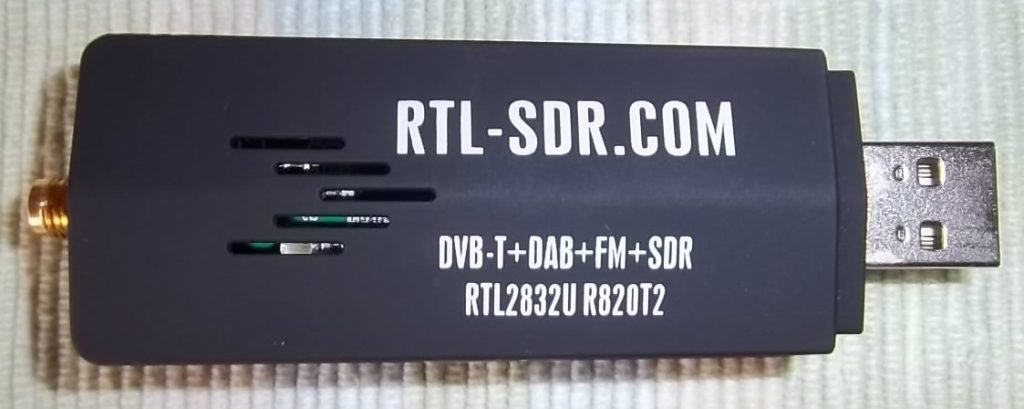
RTL-SDR.com dongle – a small broadband receiver covering all modes
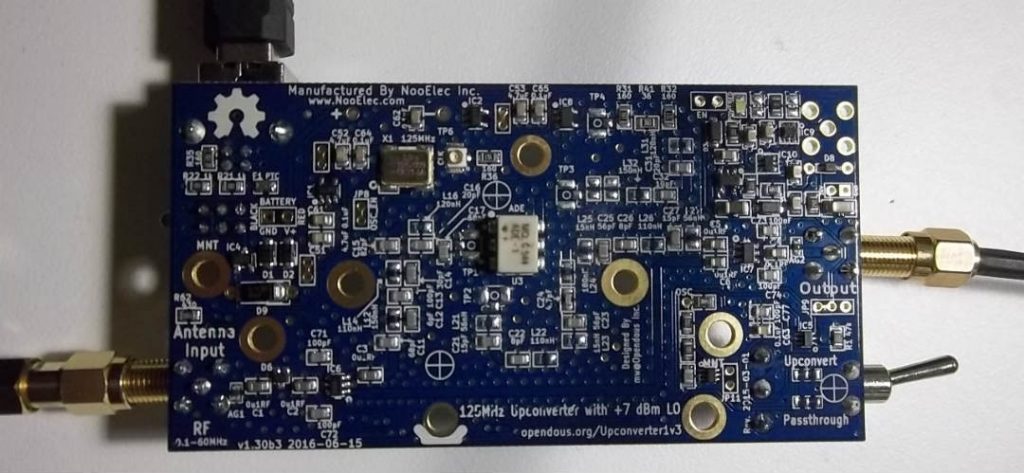
Nooelec’s Ham It Up RF Upconverter expands dongle’s receiving range to the entire HF and MW band
As the old adage goes, “a picture is worth a thousand words” so tonight the SDR dongle, along with SDR# software was fired up to get an idea of how many stations were on during the opening. The antenna used was an S9 43 foot vertical, the same one I use for HF. Using the dongle, it’s an easy feat to visualize the entire CB band on the spectral scan, which is a plot of frequency (X axis) versus signal strength (Y axis). The top half of the screen is the spectral scan and the lower half is the “waterfall” which is a time lapse recording of the spectral scan.
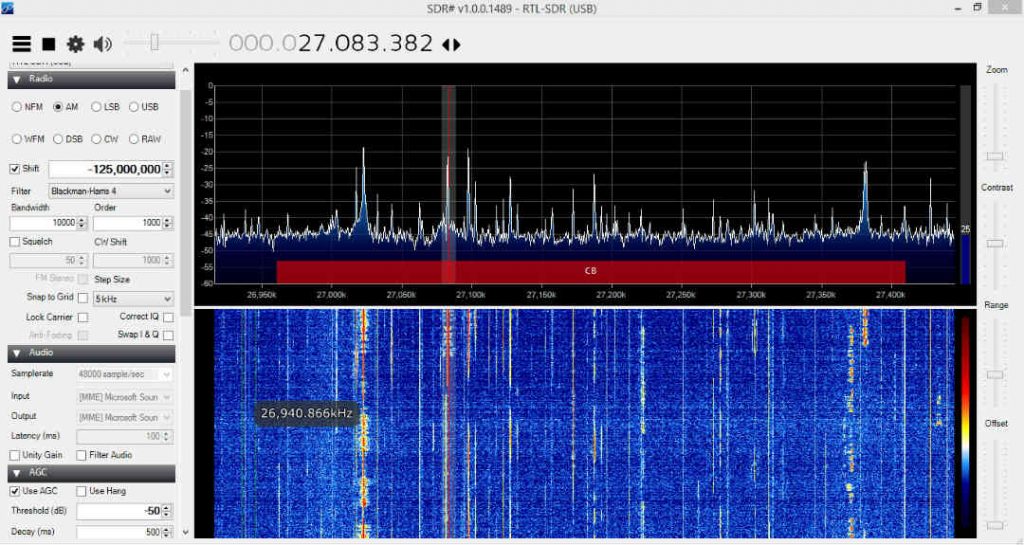
Screenshot of CB Band (wide red stripe) during tonight’s opening.
Normally at this time of night a spectral scan of the CB band would be flat-lining, but as you can see there are plenty of stations conducting QSOs, with the stronger stations having higher peaks and more intense tracings on the waterfall. Seeing the entire CB band visually gives one lots of information such as what channels are active, how many stations are on, what stations might be running higher power (limit is 4 W AM, 12W PEP SSB output), whether outbanders are active or whether DX stations outside the US are partaking of the opening.
Over the years I’ve heard the CB band open beyond midnight and on a winter’s night during a snowstorm. Some openings have lasted for hours. Last year, using the mobile CB, operators from Europe, the Caribbean, and as far away as Australia were heard during my commute to work. At the opposite extreme some days all you’ll hear is ignition noise, hihi. It’s a lot like 10 meters and even a bit like 6 meters; you never know what surprises Mother Nature has in store. Spin the tuning dial over to the CB band and take a listen one of these days.
Thank you so much, Mario!
Only a few weeks ago, I noticed on my SDR’s wideband spectrum display that the 11 meter band was very active. I started listening around and was absolutely amazed at how organized some of the nets were and how reliable skip was. Signals were blanketing all of the eastern US and even into the west. Sometimes I think there are openings on the 10 meter band, for example, but there are so few users there in comparison, no one notices. The CB frequencies are pretty much always active, when conditions are favorable for DX, everyone instantly notices!
Many might not realize that even their portable shortwave radio can tune the CB frequencies. Thank you again!

